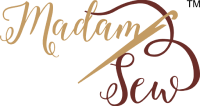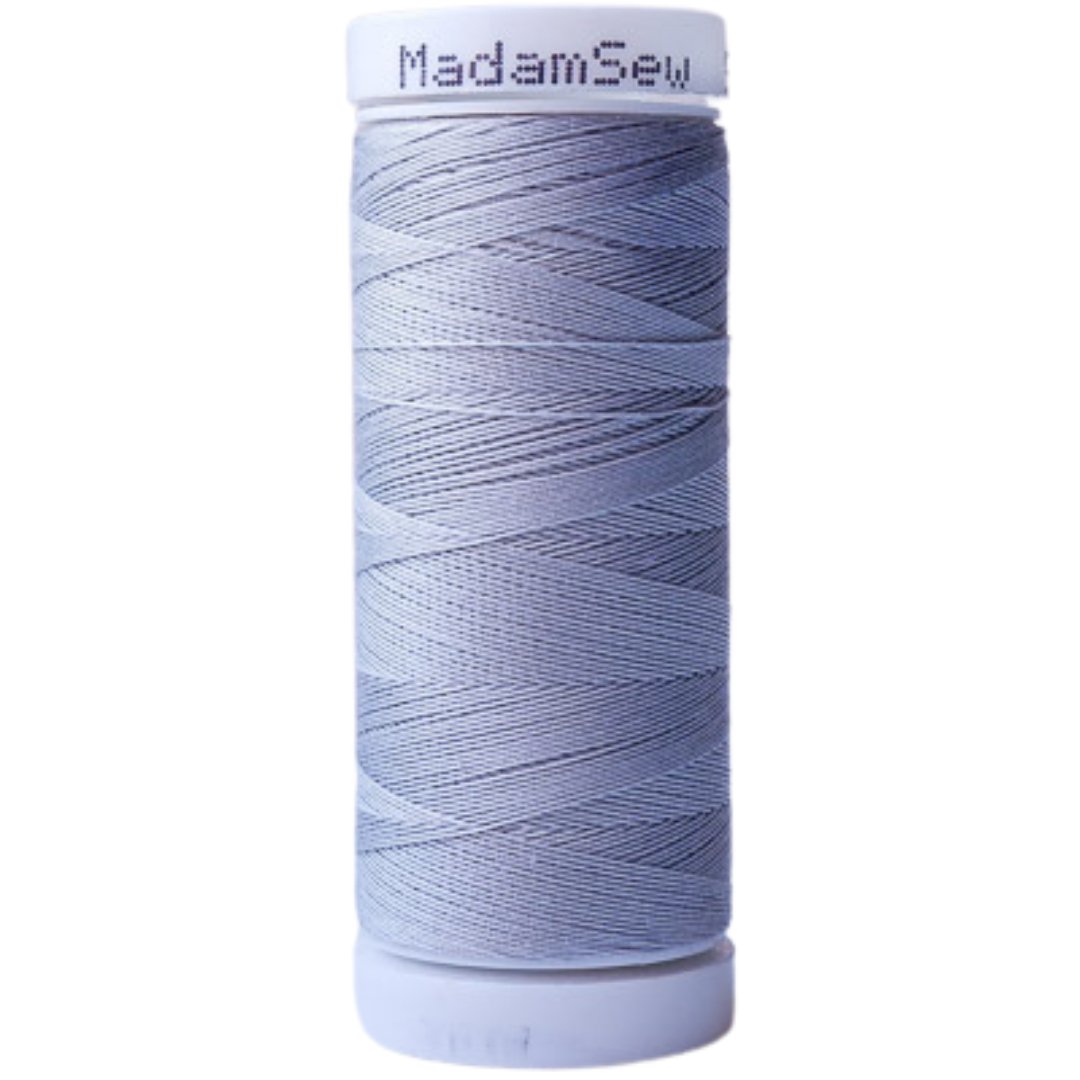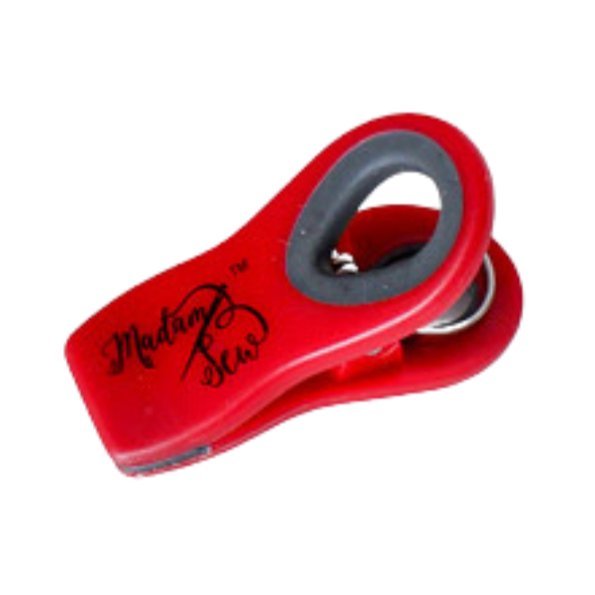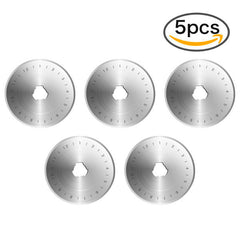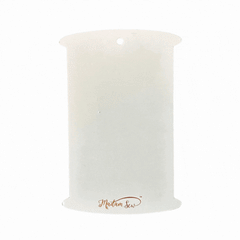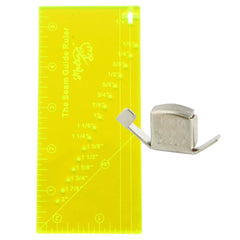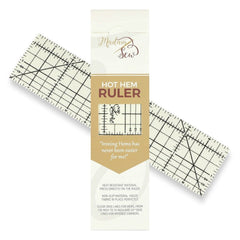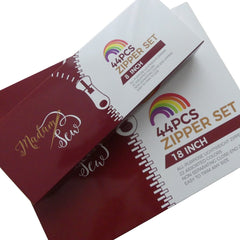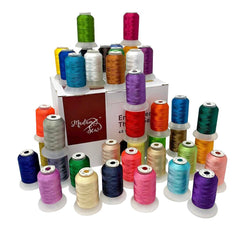How to Make Your Own T-Shirt Pattern
Some people don’t like making t-shirts because they’re easy to find in stores and not expensive at all. However, if you have a t-shirt that fits you better than others, and it’s hard to find shirts that fit you well, I want to show you how easy it is to make a pattern based on your favorite shirt! Then, you can make a second or third or fourth favorite t-shirt for your wardrobe.
Because Valentine’s day is coming up, I decided to make a tee for G, as a little surprise. I bought some knit jersey in a soft blue that matches his eyes, and then started thinking how I could make this tee a little special—with some fabric paint, iron-on vinyl, an appliqué, or an iron-on patch… I finally decided to hand embroider a symbolic date.
To make your own shirt pattern, you need your/his/her favorite t-shirt, some pattern paper, a pencil, paper scissors, a seam gauge or another ruler, a couple of pins, and some space on your table. That might be the trickiest part :-)))
To make the t-shirt, you need a jersey knit (1 ½ yards will go a long way, depending on how big your t-shirt needs to be), your regular sewing tools, matching thread, and a double needle. To finish the edges, you can use pinking shears and an overcast foot or a serger.
1. Making the Pattern for the Shirt
A basic t-shirt has four pattern pieces: the sleeves, a front body piece, a back body piece, and a neck band piece.
When making a pattern for a shirt, I add a ½” seam allowance to all pattern pieces so I can copy and cut them with the allowance included.
Start with the Pattern Pieces for the Body
Fold your t-shirt in half. Match these three points: the shoulder, armpit, and bottom seam, and pin them together.
Lay your folded t-shirt flat on your table on a piece of pattern paper or any paper or cardboard you have available. Lay the fold of the t-shirt along the edge of your paper. Fold the arms under so you only see the body and fold the body in half. Trace around the back body. This pattern piece is to be drafted “on the fold”. Don’t forget to mark this on your pattern piece.
Add ½” seam allowance all around (except on the fold). You can use a seam gauge for this.
Don’t add the neckband to the body pattern pieces. On this t-shirt, the neckband is ½ inch wide, so I copied it and used it as the seam allowance. For the bottom seam, add at least a 3/4 inch seam allowance.
The front and back body pieces mostly only differ at the neckline. Draw the front piece by pushing the back neckline down so you can trace it easily.
To draw the sleeve pattern piece, you can trace the first three sides. To draw the side that is attached to the body piece, you can trace it on top of the t-shirt if you have transparent paper, or fold away the sleeve to be able to draw that line. Add a ½ inch seam allowance on two sides and ¾ inch on the arm opening, where you will hem the seam.
I marked ‘On the Fold’ in big red letters because I forgot this while I was making this t-shirt pattern tutorial. Yes, this happens to me too, more frequently than I want — these little mistakes that can have big effects when you are sewing. And on top of it all, I only noticed in step 7! I didn’t have enough fabric left to cut two new sleeve pieces, so I decided to add an extra seam and use the two pieces I had already cut, and then cut two extra pieces and join them together. I hope the result is somewhat ok...
For the neck band piece, you can cut a strip directly out of the fabric that is 1 ½ inch (4 cm) by approximately 17 ¾ inch (45 cm). Make sure you cut your neck band piece so that it will stretch lengthwise, not width-wise.
2. Sew the T-Shirt Using Your New Pattern
Assembling the t-shirt is fairly easy, but if you have little sewing experience, you might want more details… There are many great tutorials online that explain how to assemble a t-shirt, but I’ll outline the process for you below.
Step 1
Pin and copy the pattern pieces on your fabric. Pin both body pieces “on the fold” and copy the sleeve piece twice, or copy it once on two layers of fabric so that it’s mirrored. Make sure the stretch is in the right direction—horizontally across the body. I marked the stretch direction with the red double arrows on my t-shirt pattern pieces so I wouldn’t forget.
Step 2
Cut out the pattern pieces. You end up with five pieces: two sleeves, a back body piece, a front body piece, and a neck band piece.
Step 3
If you want to do it right and don’t want the shoulder line to stretch on your tee, add some stitched stay tape on the wrong side at the front body piece to reinforce this seam.
Step 4
Finish the edges if you are using single hems. Finish the bottom edges (the waist) and the edge of both arm seams.
You can leave the rest unfinished because Jersey fabric doesn’t fray.
I used my overlock machine, but you can also rely on an overcast stitch on your regular machine (using an overcast foot to get the job neatly done) or use pinking shears to cut the edges.
Step 5
Pin the front and back body pieces together, right sides facing at the shoulder seams and sew together at ⅜ inch. Use a stretch needle + a stretch stitch to do this.
Step 6
Press the neck band piece in half lengthwise, wrong sides facing. Spray with starch if it is hard to control.
Pin the neck piece to the neckline. I’m using my sewing clips here, but you can use pins as well. Match the raw edges on the right side. Start from the center front, stretching the piece a little and distribute evenly along the neckline. When you are at the center back, put the two ends together and sew them together widthwise, right sides facing. Trim excess fabric off and pin this part to the center back. Add more clips—using lots of pins/clips really helps here!
Machine baste with a straight stitch. Press and finish the edges with a serger or stretch stitch. If desired, you can topstitch with a double needle or coverstitch machine.
Step 7
Pin the sleeves to the body pieces. Sew together with a serger or a stretch stitch. Don’t look at the extra seam in the middle of the sleeve, a little mistake on my part, the sleeve should be cut in 1 piece, at the fold. You didn’t notice, right? ;-)
Step 8
Pin and sew the side seams and press seam allowances to the back body piece.
Step 9
To hem the tee, I used a single turn and a double needle, both for the waist and the sleeves. The double needle gives your seam a little bit of stretch and mimics the look of a professional coverstitch hem.
3. Make it Special
G and I met in 1998, so I decided to hand embroider 1998 on the T-shirt. What do you think?
To do this you need a hand needle, some embroidery thread, and a piece of stabilizer.
Fuse the stabilizer to the back of the spot where you want to embroider. If you want, you can also use some tear-away stabilizer on the front. This way you can also draw your design on the stabilizer. Alternatively, you can use heat erasable pens to draw and iron the design away afterward.
I’m very curious to see who is willing to take on the challenge of making a pattern and sewing a tee with their own pattern!
Do share the result on Facebook in our MadamSew group or on Instagram #MadamSew!
An
Sewing enthusiast and sewing blogger/vlogger for MadamSew.com
Follow me on Instagram @an_madamsew and subscribe to our YouTube Channel for more inspiration and updates
Interested in theproducts I used in this post?
Why not try the sewing clips, the sewing gauge or the heat erasable fabric markers?
